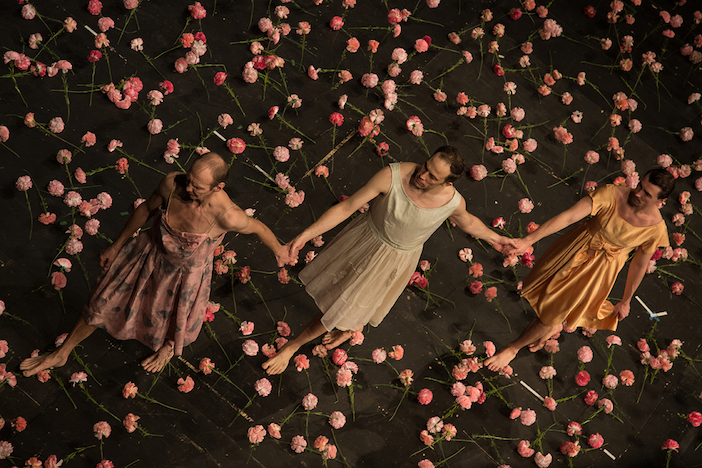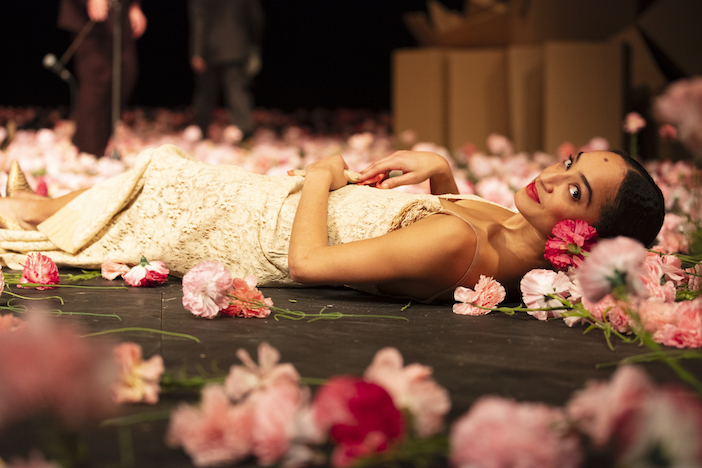In contemporary dance circles, Pina Bausch is iconic, her style quite unlike any other choreographer and the demands she makes on her dancers unique. To start with, these dancers are not mute. Far from it, they deliver monologues, scream, verbally squabble and intimidate – one repeatedly demands the others’ passports in a “show me your papers” moment. You never forget that Bausch was a child of post-war Germany and there is a sense of menace in her 1982 piece Nelken that wouldn’t be out of place in a 1940s war film.
As it opens, though, you wouldn’t suspect this at all. The stage is covered with almost 8,000 silk carnations (nelken means carnation in German) standing upright and every shade of pink as the company arrives in evening dress to sit on their chairs and admire them. This sense of calm will not last. There are four Alsatian dogs that strain on their leashes barking. Dancers rub chopped onion on to their faces or drop earth over their heads. Four stuntmen leap off towers of scaffolding. A woman is force fed oranges despite her protests. There is ritualised humiliation. It is not comfortable.

There again, it is not all menace. A group of men in ill-fitting dresses bunny hop around the flowers like a field full of rabbits at sunset. There’s a game of grandmother’s footsteps. Dancers hold hands to make stately circles or bend double under tables. One, Reginald Lefebvre, repeatedly translates Gershwin’s The Man I Loveinto universal sign language. The Gershwin music (there’s Billie Holiday and Sophie Tucker too) rubs shoulders with Schubert and Lehar but there are echoes The Man I Love woven through the score like a leitmotif.
Nelken is widely regarded as one of Bausch’s classics, created for her Tanztheater Wuppertal company which, as you may have guessed by now, is rather more theater than tanz. If you’re hoping for some fancy footwork – with the exception of a brief moment of defiance when, just to show they really can dance, Simon Le Borgne demonstrates a series of classical steps – you’ve come to the wrong place. Instead, it’s an evening of comedy, sweetness and threat, pretty much in equal measure.

At the very end, the dancers offer a fleeting insight into how they became dancers in the first place. It’s all part of Bausch’s conviction that she was “not interested in how people move but in what moves them.” It’s a moment of fun and the audience has already been lifted out of its gloom by the “Nelken Line” when the dancers process across the stage demonstrating the seasons in four simple movements to the music of Louis Armstrong. Then we are asked to do the same and, just for a moment, we’re all Pina’s dancers.
Pina Bausch is on now at Sadlers Wells until 22nd February. For more information, and for tickets, please visit www.sadlerswells.com.




